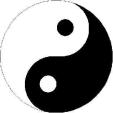Buybacks and Options, the Yin-Yang that Rules the Market
Stock buybacks and stock options are two dominant interlocked forces that have determined the direction of prices in the U.S. equity market for years, as shown in the Federal Reserve flow of funds table F213 for Corporate Equities.
 Yin and Yang
|
||
Over the last decade:
Non-financial domestic corporations have consistently taken more equities out of the stock market through buybacks, than they have added through new issues, thereby putting upward pressure on prices;
Individual direct investors in stocks, on the other hand, have regularly sold more equities into the market, than they have purchased, counteracting the effect of buybacks; and
This pattern of an excess of stock purchases by corporations and stock sales by individuals has persisted and over-shadowed other operations effecting stock prices.
Motivation Behind Buybacks and Options
The motivation of those who make the decisions that influence the volume of stock buybacks and the timing of the exercising of stock options is clear enough:
Corporate management initiates a stock-buyback program in order to push the price of company stock higher, since higher stock prices are generally regarded as indicating the quality of management performance — serving as the primary benchmark for executive remuneration;
Holders of stock options (mostly members of corporate management) exercise their options, seeking to maximize profits by selling stock into the market, according to the rules set for each option plan.
Covariance and Lack of Coordination
When a great many corporations manage buyback-option programs for the benefit of their executives, as is now the case, price increases caused by buybacks of one company reflect on the prices of stocks of other companies that might not be buying back their own stock at that particular time.
This collateral effect is due to the well-known covariance between stock prices.
Although buybacks and options are linked, the decisions of executives in ordering buyback programs and executives exercising options are not coordinated or synchronized.
Buyback decisions are made by executives acting as a body, whereas decisions to exercise options are made by individual executives, acting in their separate, individual interests.
Furthermore, because of covariance between stock prices, the decision of an executive of Company A to exercise options, may be determined not by stock buybacks of that executive’s company at that moment, but by the rise in the price of the stock of Company A, caused by covariance linked to buybacks of Companies B, C, D, E, and F.
Because of poor coordination between buyback programs and the exercise of stock options, disequilibrium occurs that crashes the market, as happened in 2000.
Higher Prices Effect Market Behavior
An increase in stock prices caused by buybacks eventually results in equities being over-priced, with price-earnings ratios surpassing historical levels.
As price-earnings ratios increase, the cost-of-capital decreases.
Foreign issuers (who are not motivated by the same buyback-option logic as domestic issuers ) are attracted by lower capital costs. They increase public offerings into the U.S. market, countering upward price-pressure of domestic buybacks.
Over-priced equities also cause sophisticated institutional investors, such as pension funds, state and local government retirement funds, and insurance companies, to reduce assets allocated to the stock market.
This further counters upward pressures of stock buybacks.
Higher stock prices caused by equity repurchases pump up the motivation of option holders to exercise their options sooner rather than later, leading to increases stock sales into the market.
A Well-Established Pattern
The increase in stock prices — the objective of stock buyback programs — leads eventually to an increase in the volume of stock sales, which forces stock prices down.
This interaction between stock buybacks, stock options, sophisticated institutional investors, and foreign issuers has been going on for years.
As documented in our case study, the yin-yang between buybacks and options was the reason for the stock market Crash of 2000.
The instability of buyback-option forces are again building.
It is advisable for prudent investors in equities to be adequately hedged, or even out of the market entirely.



























